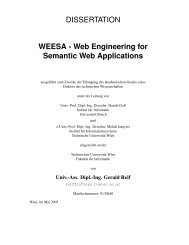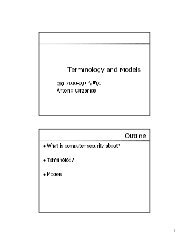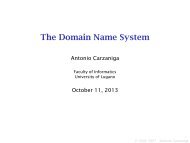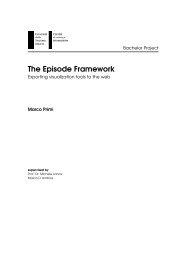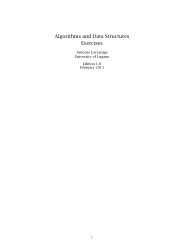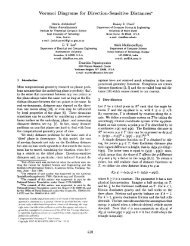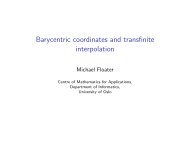Extractive Summarization of Development Emails
Extractive Summarization of Development Emails
Extractive Summarization of Development Emails
You also want an ePaper? Increase the reach of your titles
YUMPU automatically turns print PDFs into web optimized ePapers that Google loves.
need for reading them. Murray et al. [9], as a result <strong>of</strong> a user evaluation, realized that their summaries were good<br />
according to human judges, but their system was not so reliable according to ROUGE evaluation toolkit. Drawing a<br />
conclusion from the analyzed research, we consider extraction for the implementation <strong>of</strong> our system, and abandon<br />
the abstractive option.<br />
2.6 Considered techniques<br />
We consider our approach as a mixture <strong>of</strong> all the methodological steps we found to be valuable while reading the<br />
documents about the topic. The ideas we decide to embrace are the following:<br />
• The employment <strong>of</strong> human testers to gather useful features to be used in the computations aimed at extracting<br />
the sentences from a text (as in the cases [10] and [8]).<br />
• The employment <strong>of</strong> graduate or undergraduate students in the experiment, because the probability they understand<br />
the topics treated in the emails is higher ([6], [4]).<br />
• Limiting the summary length written by human testers, because too long summaries do not solve the problem<br />
<strong>of</strong> reading very long text ([4], [10], [8]).<br />
• The requirement <strong>of</strong> dividing the selected sentences into “essential" and “optional" and give different score to a<br />
sentence according to its category ([4]).<br />
• Human classification <strong>of</strong> sentences to assign a binary score to every phrase, which will be useful in machine<br />
learning phase ([10]).<br />
• Giving the human testers pre and post questionnaires to check if their choices are influenced by some external<br />
factor like tiredness ([7], [9]).<br />
• Machine learning ([10], [8]), because we observed that the best working systems are the result <strong>of</strong> a procedure<br />
involving it.<br />
We strive for creating an approach similar to the one proposed by Rambow et al. [10]. The differences are that<br />
they aimed at summarizing whole threads, while we aim at summarizing single messages, and that we implement<br />
also a s<strong>of</strong>tware system.<br />
10



